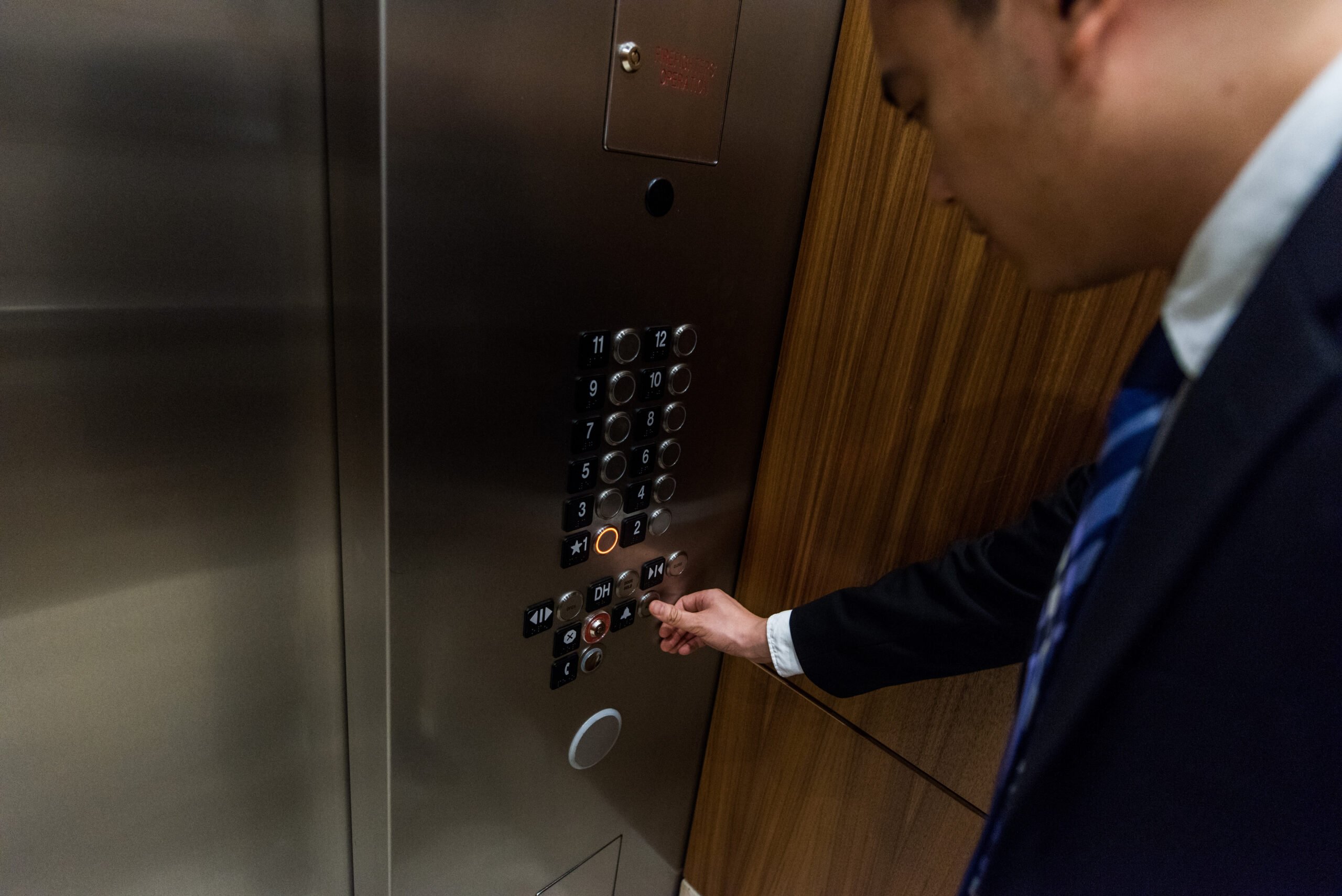BLOG CATEGORIES
Destination Dispatch Systems : Thumbs Up or Down?

The jury is still out on the marketability and success of elevator destination dispatch systems. Here, we size up the pros and cons to help you make an informed decision for your property.
Destination dispatch system groups together passengers who share similar floors. By simply using a proximity card, keypad or — even better still — a touchscreen interface, passengers quickly and efficiently get to where they need to go. In the meantime, the building benefits from energy savings, traffic reduction and complaints about wait times.
Find out how to improve safety and reduce costs at your property
Our best-in-class emergency phone + monitoring solutions provide peace of mind and are backed by decades of expertise
Learn More

2022 ELLIES WINNER
Best Supplier -
Communication System
Find out how to improve safety and reduce costs at your property
Our best-in-class emergency phone + monitoring solutions provide peace of mind and are backed by decades of expertise
Learn More
2022 ELLIES WINNER
Best Supplier -
Communication System
However, destination dispatch systems remain only a small percentage of elevators operating in the United States. They’re difficult to retrofit in existing buildings (modernization can cost anywhere between $60,000 and $250,000, depending on the building); they’re most successfully installed during new construction. Most are able to adapt to smartphone technology, which allows more convenience for occupants and employees. Is a destination dispatch system the right choice for you? Consider the following.
Learn about more elevator upgrades of all scopes in this free guide >>
The overall benefits of these elevators include:
- Reduced waiting and travel time
- Reduced overcrowding
- Quick emergency response with a special swipe card.
- Saves energy by converting to standby mode during quiet times
- Often perceived as more modern and dependable than traditional elevators
- Customization for individuals who need special access, such as VIP service or occupants with pets
- Fewer elevators are needed (however, under-elevating a building should not be automatically assumed)
- Safety: restricted access
- Special features available for people with disabilities
On the other hand, not everybody is on board for destination dispatch systems. Here are some of the reasons why:
- Reduced privacy. Regular passengers will learn where other occupants are going on a regular basis — and sometimes why.
- A lack or absence of buttons can cause anxiety in some passengers.
- Passengers often ride with the same people every day, and may not get a chance to network or meet new people.
- Passengers can push unnecessary buttons, resulting in wasted stops.
- Waiting time and transit time are two different things: many passengers assume that a destination dispatch system elevator automatically gets to their waiting floor faster; this is not necessarily so.
- Unfamiliarity with the system can cause confusion or dissatisfaction.
- The person who is standing in the elevator the longest (who has the furthest to travel) can become frustrated with the length of travel time, despite the stated convenience of the system. This frustration could compound if the passenger uses the elevator frequently.
- Many people have a preconceived negative connotation regarding elevator systems, especially in tall buildings.
- The elevator can’t distinguish between a single passenger and a group of passengers going to the same floor. This could lead to overcrowding. One solution to this could be a load vane sensor, which tells the elevator controller that there is a high load in car and doesn’t stop at other floors until the load is low enough to pick up more passengers.
Most occupants don’t realize that elevator dispatch system upgrades don’t make elevators faster — only more efficient. Elevators, no matter how modern, still operate in a physical space, with physical limitations.
Ultimately, a good elevator system, no matter which type you choose, should meet the needs of the people.
Click here to learn more about how to test your emergency phones, and how Kings III can help.
For more information on how Kings III can help you with your communications solutions for both destination dispatch systems and traditional elevators, visit www.kingsiii.com.
CATEGORIES TAGGED
ELEVATORS
PROPERTY SAFETY
CATEGORIES
KEEP LEARNING

Kings III Makes Dallas Morning News’ ‘Top 100 Places to Work’ List, Marking 5th Consecutive Award
We're honored to be recognized by our employees and The Dallas Morning News by making the daily newspaper’s Top 100 Places to Work list for the 5th year in a row, falling in at 32nd in the midsize companies category.

Updated Elevator Code: Who are my Authorized Personnel?
Confused about who qualifies as "authorized personnel" under the new ASME 17.1 elevator code? Learn why the same authorized staff must monitor all emergency communications—audio, video, and messaging—and why split monitoring solutions won't meet compliance requirements for your building's safety system.

2024 Brings Increased Adoption of Codes Requiring Video and Two-Way Messaging for Elevator Communications
As 2024 progresses, the adoption of safety codes mandating video and two-way messaging capabilities for elevator communications is gaining momentum across the United States.

What an Emergency Dispatcher will Most Likely Ask You
When suddenly faced with an emergency, you may immediately feel frightened and helpless. An emergency communications system can help reduce or eliminate those reactions by providing immediate assistance. Here's what you can expect on the other side of a call you place from an emergency phone.

Kings III Makes The Dallas Morning News Top 100 Places to Work List Becoming a 4x Winner
We're honored to be recognized by our employees and The Dallas Morning News by making the daily newspaper’s Top 100 Places to Work list for the 4th year in a row, falling in at 26th in the midsize companies category.

January 2024 Elevator Code Updates in Florida
Florida property managers have finally completed DLM requirements in their elevators (hopefully). But wait, there's more! Florida will adopt ASME 2019 starting January 1, 2024. Learn what this means, how you can comply, and get guidance from our code experts.

Survey Reveals Gaps in Building Emergency Communications Plans
A recent survey of property management professionals revealed that while more than 60 percent of respondents were aware that telecom companies are phasing out POTS (Plain Old Telephone Service, also known as analog copper land lines), nearly half reported their elevator emergency communication systems are still based on this endangered technology.

Successful Hotel CO Inspections
A CO is a vital requirement before opening your new-build/renovated hotel. One area we often see overlooked within the process is telecommunications. To help get you started, we’ve compiled a checklist of key telecom-specific items to consider that may be subject to inspection.

How is Elevator Liability Defined?
One of a building owner’s worst nightmares: a passenger gets into an elevator in perfect health but ends the ride with a serious physical or psychological injury. Thankfully, this is an extremely rare scenario, but all those involved in building management should know exactly how to define elevator liability and take action if an incident occurs.





